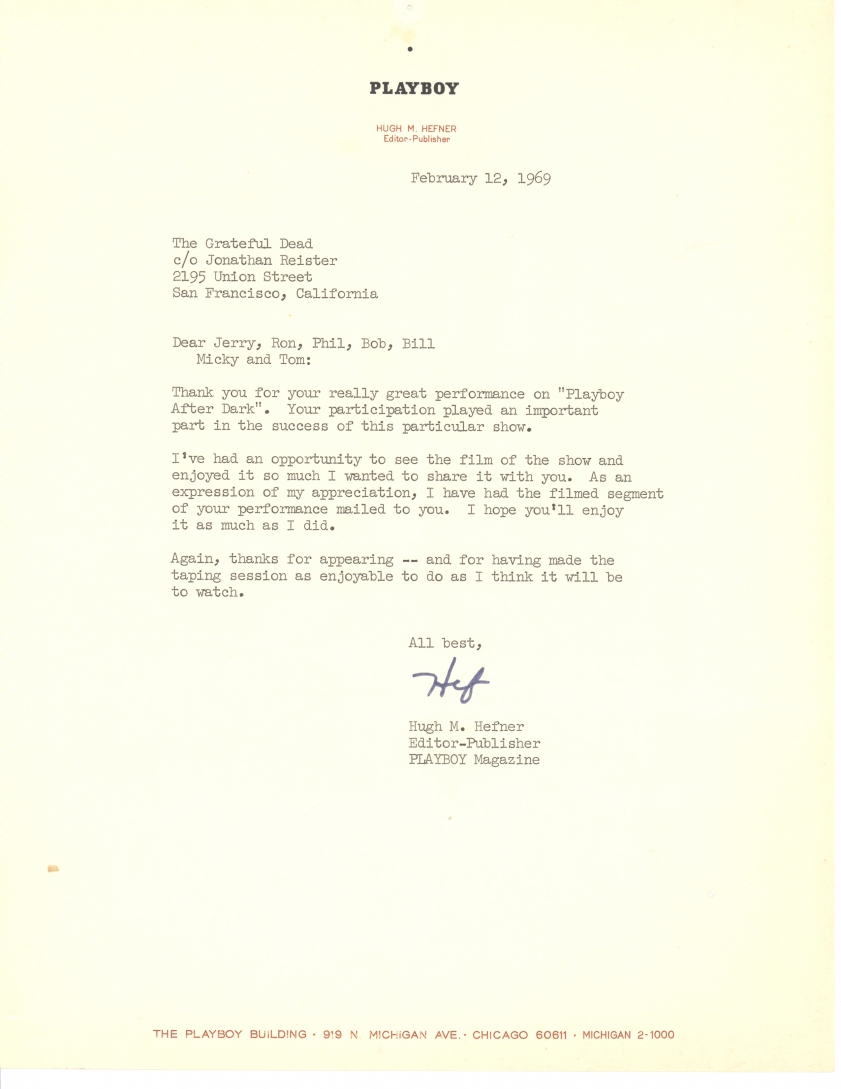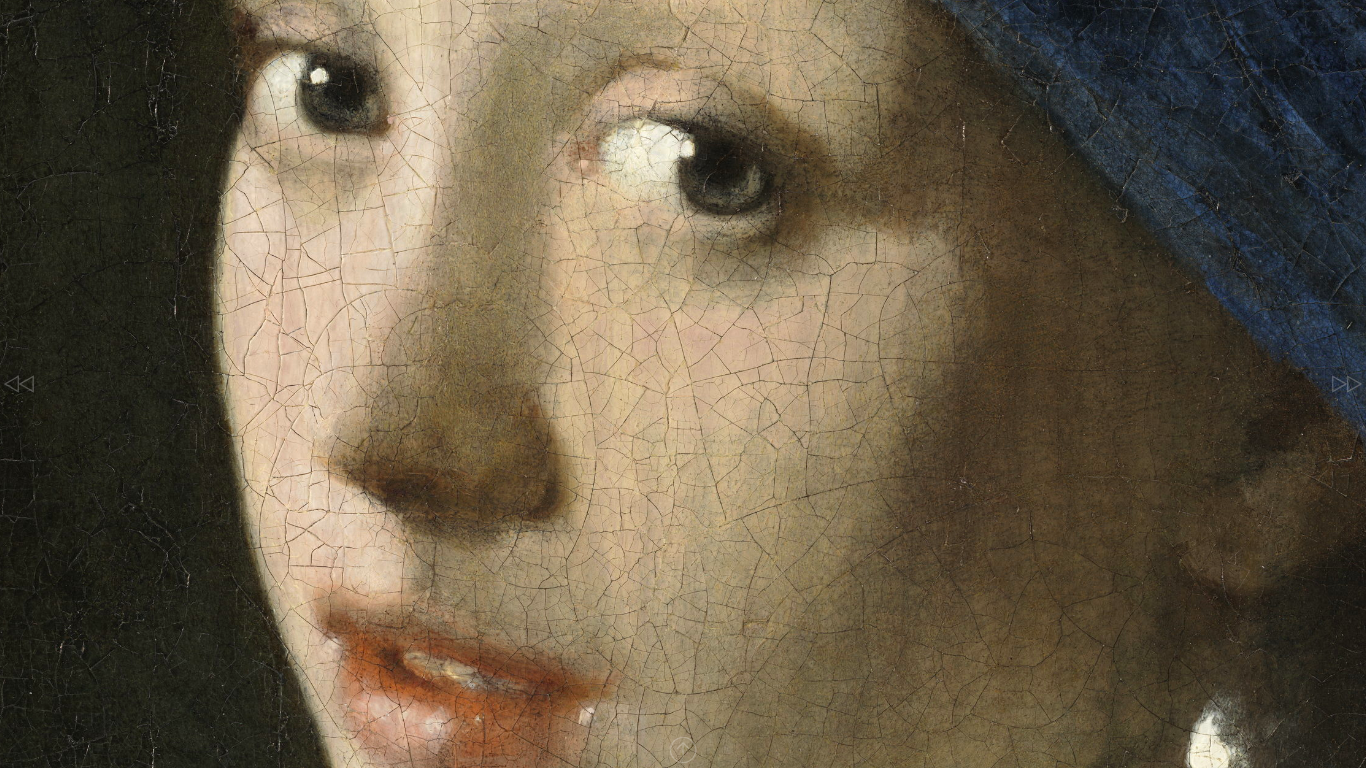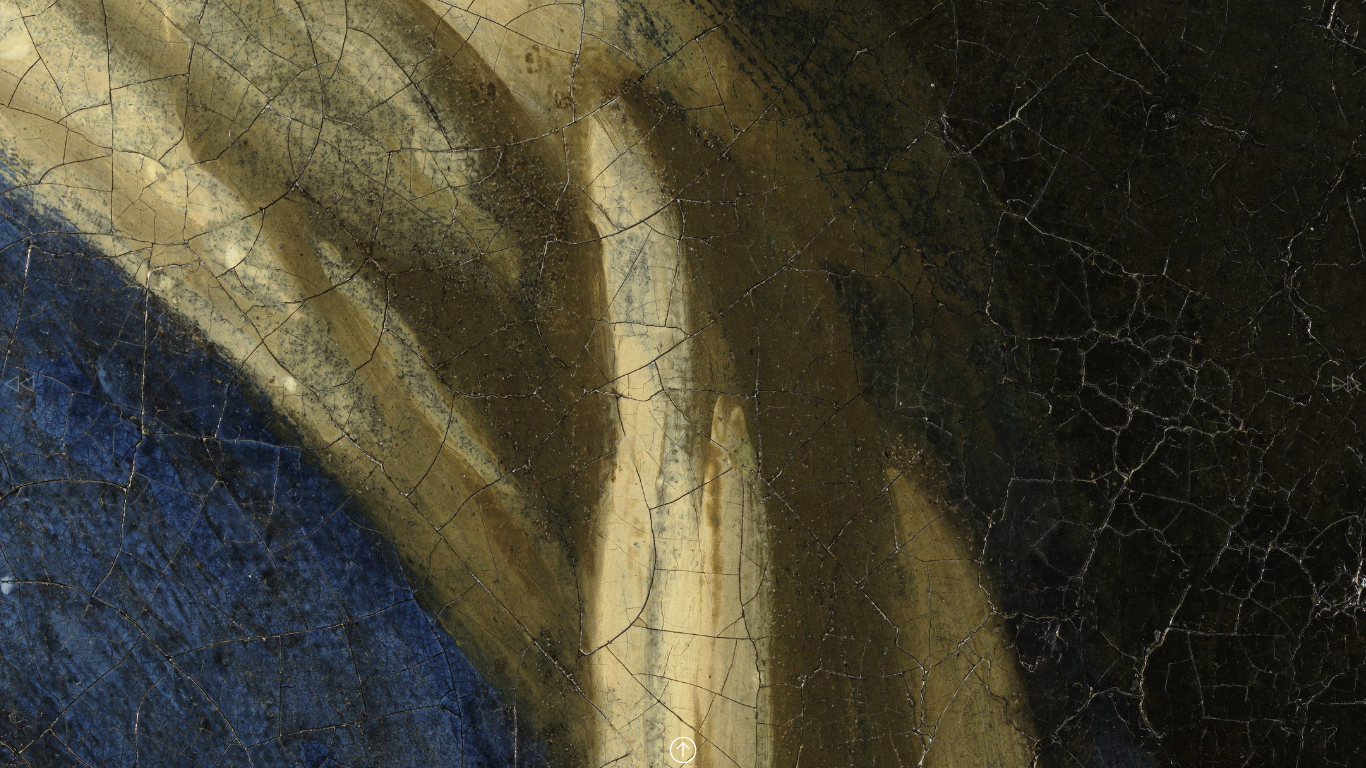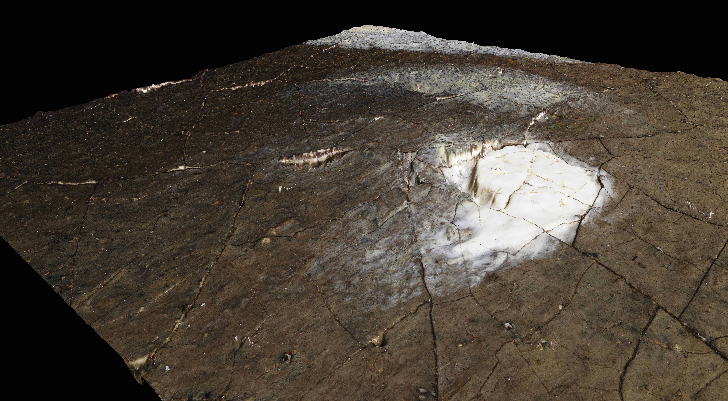[Most Recent Entries] [Calendar View]
Friday, January 22nd, 2021
| Time | Event |
| 9:02a | When the Grateful Dead Performed on Hugh Hefner’s Playboy After Dark & Secretly Dosed Everyone With LSD (1969) At one time, whatever else people did with it, they really did read Playboy for the articles. And whatever other vicarious thrills they might obtain from Hugh Hefner’s Playboy’s Penthouse variety show or its follow-up, Playboy After Dark, they definitely tuned in for the music. Guests included Ike & Tina Turner, The Byrds, Buddy Rich, Cher, Deep Purple, Fleetwood Mac, Steppenwolf, James Brown, and many more. On January 18, 1969, the Grateful Dead performed, and it went exactly as one might expect, meaning “things got totally out-of-hand,” Dave Melamed writes at Live for Live Music, “but everything wound up working out just fine. Things worked out more than fine, despite, or because of, the fact that the band’s legendary sound-man Owsley “Bear” Stanley (at that time the largest supplier of LSD in the country) dosed the coffee pot on set. Dead drummer Bill Kreutzmann tells the story in the Conan clip below. It all started, he says, during soundcheck, when he noticed that the crew was acting “kinda loose.” Knowing Stanley as he did, he immediately suspected the cause: “the whole crew, all of you” he says pointing toward the Conan camera operators, “was high on acid.” There’s not much evidence of it in the footage. There don’t seem to be any technical problems in the clip at the top. In their brief, jovial interview, Hefner and Garcia seem plenty relaxed. Jerry tells the Playboy founder why the band has two drummers. (They “chase each other around, sort of like the serpent that eats its own tail” and “make a figure in your mind” if you stand between them.) Then he takes the stage and the band plays “Mountains of the Moon” and “St. Stephen.” Hefner was so appreciative of whatever happened on set that he sent a personal letter of thanks the following month (below), addressed to each member of the band. “Your participation played an important part in the success of this particular show.” He enclosed a film of the performances and expressed his gratitude “for having made the taping session as enjoyable to do as I think it will be to watch.”
Kreutzmann relates some other anecdotes in his 2015 Conan interview, including a funny bit about how the band got its name. But the best part of the appearance is watching him imitate Hefner, who was apparently plastered to the wall by the end of the set, the coffee really starting to kick in. This strange chapter of Grateful Dead history is one of many memorialized in the new graphic novel, Grateful Dead Origins. via Laughing Squid Related Content: Josh Jones is a writer and musician based in Durham, NC. Follow him at @jdmagness When the Grateful Dead Performed on Hugh Hefner’s Playboy After Dark & Secretly Dosed Everyone With LSD (1969) is a post from: Open Culture. Follow us on Facebook, Twitter, and Google Plus, or get our Daily Email. And don't miss our big collections of Free Online Courses, Free Online Movies, Free eBooks, Free Audio Books, Free Foreign Language Lessons, and MOOCs. |
| 3:00p | How Quentin Tarantino Shoots a Film at 3 Different Budget Levels: Reservoir Dogs ($1 Million), Pulp Fiction ($8 Million), and Once Upon a Time in Hollywood ($95 Million) Quentin Tarantino has never shied away from talking, at length and at a rapid clip, about his process. “In another life,” Colin Marshall writes in a previous post on the subject, he might have become a “foremost practitioner” of the video essay on cinema. His meticulous analyses of not only his own films but also the hundreds he references–or outright steals from–can be dizzying, the ravings of an overactive creative mind that seems impossible to rein in. Tarantino has also given us significant insight into his screenwriting process, saying “I was put on Earth to face the blank page” and claiming that he watches the entire film in his mind’s eye before putting pen to paper. He wrote Pulp Fiction “off and on,” Mark Seal notes at Vanity Fair, “in a one-room apartment with no phone or fax” in Amsterdam. Then he sought out veteran Hollywood typist Linda Chen, who agreed to type, and edit, the manuscript for free. “His handwriting is atrocious,” says Chen. “He’s a functional illiterate. I was averaging about 9,000 grammatical errors per page. After I would correct them, he would try to put back the errors, because he liked them.” As a writer, Tarantino’s quirks don’t actually seem out of place. As a director, his process would not seem to lend itself to the most disciplined production. The final product of that error-ridden script, however, became what Roger Ebert called “the most influential” movie of the 90s, “so well written in a scruffy, fanzine way that you want to rub noses in it—the noses of those zombie writers who take ‘screenwriting’ classes that teach them the formulas for ‘hit films.’” Of course, great writing is an indispensable part of making a great film, but so too is great filmmaking…. How did Tarantino go from feverishly hand-scribbled script to a “most influential” film as a director? He has worked within strict limitations, as on his directorial debut, Reservoir Dogs, with larger budgets and better sets, as on Pulp Fiction, and on his most recent film, the $95 million Once Upon a Time in Hollywood. But he has always maintained a consistent visual style easily recognizable across all nine of his films. In the video essay above from In Depth Cine, you can learn more of the story of how Tarantino accomplished his directorial visions, and how that style followed him from film to film. The video gets into technical details like the choice of 35mm cameras and the lighting placement. It also tells the story of how three films—Reservoir Dogs, Pulp Fiction, and Once Upon a Time in Hollywood—used their vastly different budget levels, while all remaining true to each other and to their writer and director’s intentions. Related Content: An Analysis of Quentin Tarantino’s Films Narrated (Mostly) by Quentin Tarantino Quentin Tarantino’s Copycat Cinema: How the Postmodern Filmmaker Perfected the Art of the Steal Quentin Tarantino Explains How to Write & Direct Movies Josh Jones is a writer and musician based in Durham, NC. Follow him at @jdmagness How Quentin Tarantino Shoots a Film at 3 Different Budget Levels: Reservoir Dogs ($1 Million), Pulp Fiction ($8 Million), and Once Upon a Time in Hollywood ($95 Million) is a post from: Open Culture. Follow us on Facebook, Twitter, and Google Plus, or get our Daily Email. And don't miss our big collections of Free Online Courses, Free Online Movies, Free eBooks, Free Audio Books, Free Foreign Language Lessons, and MOOCs. |
| 8:01p | A 10 Billion Pixel Scan of Vermeer’s Masterpiece Girl with a Pearl Earring: Explore It Online
We admire Johannes Vermeer’s Girl with a Pearl Earring for many reasons, not least that it looks exactly like a girl with a pearl earring. Or at least it does from a distance, as the master of light himself no doubt stepped back to confirm countless times during the painting process, at any moment of which he would have been more concerned with the brushstrokes constituting only a small part of the image. But even Vermeer himself could have perceived only so much detail of the painting that would become his masterpiece. Now, more than 350 years after its completion, we can get a closer view of Girl with a Pearl Earring than anyone has before through a newly released 10 billion-pixel panorama. At this resolution, writes Petapixel’s Jason Schneider, we can “see the painting down to the level of 4.4-microns per pixel.” Undertaken by Emilien Leonhardt and Vincent Sabatier of 3D microscope maker Hirox Europe “in order to evaluate the surface condition of the painting, measure cracks, and see the topography of various key areas while assessing past restorations,” the project required taking 9,100 photos, which “were automatically captured and stitched together to form one finished panorama image where one pixel equals 4.4 microns.”
You’ll understand what this means if you view the panorama and click the plus symbol on the bottom control bar to zoom in — and click it again, and again, and again. (Or just click it and hold it down.) Before long, Girl with a Pearl Earring will look less like a girl with a pearl earring than what she really is: centuries-old oil paints on a centuries-old canvas. The physicality of this work of art, one so often held up as the realization of aesthetic ideal, becomes even less ignorable if you click the “3D” button. This presents ten individual sections of the painting scanned in three dimensions, which you can freely rotate and even light from all directions.
The 3D-scanned portions include the titular pearl earring, which appears to have a bit of a gouge in it. They’re more clearly visible in 5x topographical viewing mode (selectable on the top control bar). This official Hirox video offers a glimpse of the procedure required to achieve the kind of unprecedentedly high-resolution view of Girl with a Pearl Earring that allows us to behold details heretofore practically invisible. At more than 10,000 megapixels, the background reveals itself to be in fact a dark green curtain, and the girl herself has clearly defined eyelashes. But as for her long-speculated-about identity, well, there are some things microscopy can’t determine. Take a close look at Vermeer’s painting here. And if you’d like to take a similar look at Rembrandt’s The Night Watch, click here. via Colossal Related Content: Why is Vermeer’s Girl with a Pearl Earring Considered a Masterpiece?: An Animated Introduction Master of Light: A Close Look at the Paintings of Johannes Vermeer Narrated by Meryl Streep Download All 36 of Jan Vermeer’s Beautifully Rare Paintings (Most in Brilliant High Resolution) Based in Seoul, Colin Marshall writes and broadcasts on cities, language, and culture. His projects include the Substack newsletterBooks on Cities, the book The Stateless City: a Walk through 21st-Century Los Angeles and the video series The City in Cinema. Follow him on Twitter at @colinmarshall, on Facebook, or on Instagram. A 10 Billion Pixel Scan of Vermeer’s Masterpiece Girl with a Pearl Earring: Explore It Online is a post from: Open Culture. Follow us on Facebook, Twitter, and Google Plus, or get our Daily Email. And don't miss our big collections of Free Online Courses, Free Online Movies, Free eBooks, Free Audio Books, Free Foreign Language Lessons, and MOOCs. |
| << Previous Day |
2021/01/22 [Calendar] |
Next Day >> |







